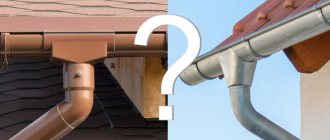Good day! Let's discuss - convector or oil heater - which is better.
In the house of one of my distant relatives (living outside Russia) last year, just before the season, the central heating was cut off. It happened unexpectedly - housing and communal services employees simply came to his house with an oil heater and offered to survive the winter like this. Is it a good joke to heat 60 square meters of space with one fireplace? Naturally, he no longer had time to design and install a gas system. I decided to endure it and buy something electric. If you suddenly face a similar choice, read this article.
Oil radiators
Heating devices radiate heat in different directions, creating a flow of warm air that is directed upward. As a result of this process, rapid heating of the room occurs.
Most often, oil radiators are used as additional heating units. The main way they differ from convector equipment is their large working area. Due to the circulation of hot mineral oil through the circuit, the entire surface of the radiator is heated. Such devices can be placed anywhere in the room (along the walls, under the table). There are also models designed for wall use only.
There is a heating element inside the oil cooler that warms up the oil, then it releases heat to the surrounding area Source gopb.ru
Pros:
- relatively fast heating of the room;
- mobility of the device;
- presence of built-in thermostats;
- simple maintenance;
- affordable price.
Minuses:
- there is a danger of getting burned due to the strong heating of the device, especially if there are small children in the house;
- Leaks may form in low-quality units;
- are used to produce only additional heat.
The oil radiator should not be left unattended - it is not intended for constant operation Source tehno-rating.ru
Dimensions and appearance
When purchasing a heater for a country house, few people care about the compactness of the device - as long as it copes with the task assigned to it. Residents of small apartments are forced to take into account the size of fireplaces so as not to steal functional space from their home.
In terms of compactness and ease of placement, wall convectors win - they are flat and lightweight. Floor-standing ones won’t take up much space either. Oil radiators are more bulky and cannot be attached to the wall. In addition, not everyone likes the mass of such devices - when a heater weighs 20 kg, difficulties arise when moving from room to room, even with wheels.
As for the design, here I also give sympathies to convectors. They are laconic, discreet and fit into any interior. Moreover, wall-mounted models can be hidden behind mesh decorative grille panels.
Oil fireplaces are not distinguished by grace and beauty. Most of them look like a standard Soviet heater. But if you need to heat an average room, keeping it warm, and appearance is not important to you, then a radiator will be the best choice.
Radiators for water heating
They are used in permanent heating systems (centralized, autonomous). The heating process occurs with the help of a coolant circulating through the circuit. Unlike oil radiators, water radiators do not require power. Connecting a heating system with the latter to a gas boiler significantly reduces the cost of heating a home.
If thermostatic valves are installed on water radiators, it will be possible to set the required temperature in each individual room.
When choosing radiators for water heating, it is extremely important to pay attention to the material they are made from Source kermi.su
Pros:
- huge heat transfer;
- environmental friendliness;
- relatively high power.
Minuses:
- considerable cost;
- excessive heating of the case.
If water radiators are connected to a single heating system, then the temperature in all rooms of the house will be the same Source roomester.ru
Installation location
*
IR heaters are divided according to the installation location into the following types:
- ceiling;
- wall;
- floor;
- mobile.
The first three types of heaters are stationary. They do not take up free space and are distinguished by solid power and high efficiency. At the same time, mobile heating devices can be easily removed when not needed. In addition, they are significantly smaller in size than their stationary counterparts.
The most common IR heaters are ceiling-mounted. The heat-emitting element in them can be made of aluminum, glass, metal plates, anodized aluminum.
Attention: The most advanced and high-quality models are made of glass, as they are not capable of burning out.
But they also have a significant disadvantage - high cost. Products with an anodized aluminum plate are also in great demand. Among their advantages are strength, light weight and long service life.
Wall-mounted IR heaters are recommended to be installed under windows. This placement allows you to achieve high-quality and quick heating of the room.
The difference between a convector and a radiator
The difference between a convector and a radiator
Having examined the principles of operation, design features, pros and cons of various devices, you can begin to compare them. It is also worth noting that modern heating units are constantly being improved; new models no longer have significant shortcomings.
The main differences between a convector and a radiator are:
- Compactness. Convector units are more compact and require less space for installation.
- Housing heating rate. Convectors cope with this task faster. But after switching off, they immediately stop heating the room, and the radiators continue to give off heat for some time.
- Safety. The convector body heats up less than the radiator. If you touch the hot surface of the latter, you can get burned.
- Heating of large areas. The radiator copes with this task much more efficiently.
- Easy to maintain. To properly clean a convector unit, it is important to understand how dust gets into it. To clean the radiator, you only need to wash the housing or remove dirt from it.
- Price. It is impossible to unequivocally answer the question which unit (radiator or convector) is more expensive. Due to the significant number of models, there are deviations in different directions.
Saving is everything
Well, not everything, of course, but this is a very important parameter. Agree, any consumer of two devices will choose the energy-saving one if both heat equally.
So what is more economical - oil or convection? Oil-based devices take longer to gain momentum to release heat. As soon as the unit warms up, it already “eats” approximately 500 W (depending on the power of the model). It turns out that you are paying extra money for emptiness. Although, if you close the room and turn off the thoroughly hot device, it will maintain heat for about half an hour.
But isn’t it easier to take a convector that will start heating immediately, reducing electricity consumption by 25%? Please note that this is only relevant in the case of conventional models - if there is a fan near the fireplace, the savings disappear.
Conclusion: convectors are faster and therefore use energy more sparingly. But only in the absence of additional functions.
What to choose: radiator or convector?
The choice of a heating device largely depends on the conditions of its use, the characteristics of the room, and financial capabilities. Numerous reviews about the use of different radiators and convectors indicate that the latter option is more profitable to buy. Among its positive aspects, they often note: efficiency, significant heat transfer, elegant design, and the ability to heat large rooms. But in order to make a final conclusion, it is worth carefully considering all the pros and cons of individual units.
Typically, convectors are more expensive than radiators. That's why many people prefer the latter. In fact, this is not always beneficial. Convector units have a number of undeniable advantages; their purchase is optimal for most cases.
Which heater is better
Attention: In terms of its performance characteristics, an oil heater is more efficient than its infrared counterpart.
Thanks to its solid power, functionality and high efficiency, it can be used to efficiently heat any room. The cost of this climate control equipment is reasonable. It is safe, quiet and has a long service life. Despite its considerable weight, thanks to the presence of wheels, it is easy to move from place to place, and its shortcomings are not critical.
Tips for choosing
As Roskachestvo noted, fan heaters are considered the noisiest, while infrared ones are considered the quietest. When choosing the power of a heater, experts advise proceeding from the size of the room. The power of the device is determined according to the principle: for each square meter, 100 W of heater power is required. An additional 200 watts should be added for each window in the room. The same amount needs to be added if the room has an external wall. Next, it is worth considering other conditions that affect heat loss in the house: ventilated frames, weak central heating, ceilings higher than 3 m, etc.
“How safe it will be to use a heater in an apartment depends not only on the device itself, but also on the condition and capabilities of the home electrical network. Therefore, before making a purchase decision, make sure that your electrical network will “pull” the new device,” advise Roskachestvo. However, almost all modern heaters have a protective system that turns off their operation if they overheat. If safety precautions are observed, the device should not cause a fire.
However, it is better not to leave fan heaters unattended or use them for a long time: they can overheat. There is no risk of fire when using infrared heaters, since the device itself does not heat up. But floor heaters (most often oil-based) can get very hot and cause burns.
According to Roskachestvo experts, the efficiency is highest for infrared models. However, to heat one small room, they recommend an oil heater (radiator). A fan heater is usually used when you need to warm up a room very quickly.
see also
Comments 64
hi, have you tried gas infrared cameras?
Thanks for the tests. Simple and clear. And most importantly - on a budget.
Thanks for the experience.
Still, IMHO, a wood stove is better. Minus - looking for firewood, plus - quick heating; provided you have an insulated garage, after half an hour you can dance in a sweater, and then undress to your usual overalls. Again, not as dangerous as with a stove during testing. The only thing is to make a good chimney.
All the bells and whistles such as boilers, the addition of a radiator system are already for those who hang out in garages from morning to evening - working there, doing something else... I left in the evening, came in the morning - it’s still warm in the garage.
Of course, if the garage is located somewhere in a residential area, then this is not an option... Then either look for free electricity or gas.
I have a garage in a residential area F-) On both sides of the house, 30-50 meters away. The neighbor also has a potbelly stove... Only his is a very primitive one with a short chimney, and it blows away soot. I have a potbelly stove that has been converted three times and now I have almost brought it to the pyrolysis mode - all that remains is to organize the supply of oxygen for afterburning. The stove is more than three years old, and there have never been any complaints from anyone so far.
Still, IMHO, a wood stove is better. Minus - looking for firewood, plus - quick heating; provided you have an insulated garage, after half an hour you can dance in a sweater, and then undress to your usual overalls. Again, not as dangerous as with a stove during testing. The only thing is to make a good chimney.
All the bells and whistles such as boilers, the addition of a radiator system are already for those who hang out in garages from morning to evening - working there, doing something else... I left in the evening, came in the morning - it’s still warm in the garage.
Of course, if the garage is located somewhere in a residential area, then this is not an option... Then either look for free electricity or gas.
In the street, yes, in a multi-storey cooperative it won’t work
In a multi-storey parking lot, if you dig around sometimes in winter, there’s only electricity. In this case, it is advisable to refill the floor so that there is thermal insulation from the main screed. IR emitters on top, insulate the gates...
That's the only way, IMHO. to heat the floor, and from it to warm up yourself, rather than wasting air
IR is not allowed from above. The head instantly overheats... It is at least 1.7 m closer to the emitter than the floor. Relying on significant heating of the floor from IR emitters on the ceiling is a futile exercise. Either their power should be sky-high, or they should be half a meter from the floor. IR is placed on the sides and directed towards the legs and body. You can’t overheat your head... the blood vessels really don’t like that. Yes, everything will be icy - the floor, walls, tools, but the body will be warm.
Distinctive characteristics of the devices
You can more accurately express the differences between oil and infrared heaters from each other in the table:
| Oil heater | Infrared heater |
| It takes a long time to heat up (about 20-30 minutes), after turning off it takes a long time to cool down, and the heat remains for some time. | It heats up quickly, immediately after switching on, but also cools down quickly. |
| Powered by electricity. | There are both electric models and models running on gasoline, diesel fuel, and natural gas. |
| They are used more often in everyday life (in an apartment, in a country house). | There are models suitable for living rooms, balconies, garages. There are medium-wave devices that heat industrial warehouses, as well as short-wave devices that supply heat to stadiums and street stages. |
Safety first
The types of devices being compared are classified as high-risk heating devices. The devices are equipped with built-in overheating protection. When the maximum temperature is reached, the device automatically turns off.
Electrical devices have an increased risk of electric shock. To prevent injury, it is necessary to strictly comply with fire and electrical safety requirements.
Some models are used in rooms with high humidity. To protect against damage, the devices have a high degree of sealing.











